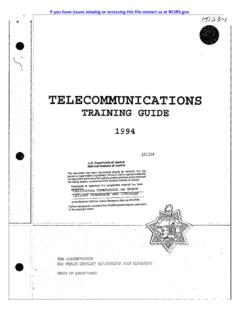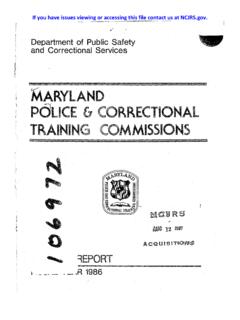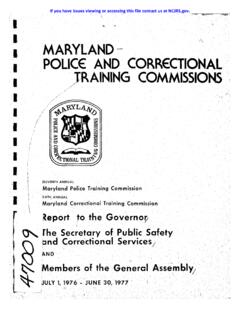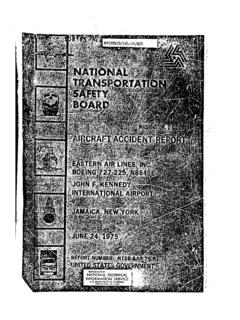Transcription of Technological Innovations in Crime Prevention and Policing ...
1 CPS 2011-3, nr. 20 17 Technological Innovations in Crime Prevention and Policing . A Review of the Research on Implementation and Impact Cahiers Politiestudies Jaargang 2011-3, nr. 20 p. 17-40 Maklu-Uitgevers ISBN 978-90-466-0412-0 James Byrne1 and Gary Marx2 New Technological Innovations have been developed to prevent Crime and to improve the performance of the police, but we know remarkably little about how and why certain Innovations are adopted, and the consequences both intended and unintended of technology-driven solutions to the problem of Crime .
2 This article provides an examination of a wide range of new Technological Innovations that have applications in the areas of Crime Prevention generally, and Crime control (by police) in particular. We provide a description of recent Technological Innovations , summarize the available research on the extent of adoption in the United States, and then review the available research on the impact both intended and unintended of each form of new technology on Crime Prevention and police performance. We also discuss three key issues (1) militarization of Crime Prevention and Policing , (2) coercive vs.
3 Non-coercive technology, (3) public vs. private sector control over Crime Prevention and Policing raised by both proponents and critics of what has come to be known as the second technology revolution. 1. IntroductionEven a cursory review of the historical development of our efforts to prevent Crime underscores the point that technology or more precisely, Technological innovation has been the driving force leading to reform of Crime Prevention and Crime control strate-gies, both by individual citizens and concerned groups, and by formal police agencies (Reichert, 2001; Chan, 2001; Harris, 2007).
4 There are two general types of Technological Innovations that can be identified: information-based technologies (which we will refer to here as soft technology) and material-based technologies (which we will refer to here as hard technologies). Both types of Technological innovation have been linked to dramatic changes in the organization of police (Reichard, 2001:1), particularly at the turn of the last century, while similar linkages can be offered to more general Crime Prevention strategies employed by individuals and groups of to a recent review of police technology by Harris (2007), the first technology revolution in the United States that changed the way police were organized and how 1 James M.
5 Byrne is Professor of Criminal Justice and Criminology, University of Massachusetts, Lowell2 Gary T. Marx is Professor Emeritus at MIT (Massachusetts Institute of Technology). Technological Innovations in Crime Prevention and Policing18 CPS 2011-3, nr. 20they operated centered around three Technological Innovations that were incorporated into Policing : the telephone, the two-way radio , and the automobile: With the proliferation of telephones in the early twentieth century, Policing changed. Citizens called and in fact were encouraged to call the police to deal with a multitude of problems, and the police responded to those calls from dispatch via a two-way radio , and sped quickly to locations via patrol cars.
6 These Technological advances, along with changes in police admin-istrative procedures, helped to create the police as we know them today (Harris, 2007: 153).Several commentators have argued that we are in the beginning stages of a second Technological revolution, which will once again dramatically change police organization and administration (Chan, 2001; Stroshine, 2005; Harris, 2007). A recent review of the use of information technologies by law enforcement agencies highlighted the role of the Federal government in funding these new technology Innovations .
7 Between 1995 and 2002, Goff and McEwen (2008: 8) noted that the Office of Community Oriented Policing Services (COPS) program gave grants that helped more than 4,500 law enforce-ment agencies acquire and implement technology in support of efficient police operations. The grants totaled more than billion and funded Crime fighting technologies that helped redeploy the equivalent of more than 42,000 full-time law enforcement professionals into community Policing activities . While the specific types of technologies acquired in this program varied from agency to agency, the most commonly acquired technologies were mobile data centers (MDCs) or laptops, followed by automated field reporting systems (AFRS), record management systems (RMS), personal computers, computer-Aided Dispatch (CAD) Systems, and Automated Fingerprint Identification Systems (AFIS).
8 Of course, these technology expenditures only tell part of the technology implementation story. In a recent review, Hummer (2007) has documented the acquisition of a wide range of additional hard technology Innovations during the last two decades, including new weapons, less-than-lethal force technologies, body armor, CCTV systems, gunshot location technology, and new patrol car technology. If this investment in new technology does result in fundamental changes in the way we prevent Crime and/or respond to Crime , then perhaps the second technology revolution is here.
9 However, there are critical questions that need to be considered about the design, development, implementation, and impact of Crime Prevention and police technology identify a range of new Technological tools in the following review, separating hard material based Technological Innovations from soft information based Innovations in two areas: Crime Prevention , and policing3 . For each type of innovation , we describe the 3 There are many ways of classifying the material. More analytic concerns focus on ways of controlling the environment (target removal, devaluation, or insulation, offender weakening or incapacitation, exclusion and offense/offender/target identification (Marx 2007) or on basic functions (Nogala 1995).)
10 However since our goal here is merely descriptive, the simple hardware-software as broadly defined is sufficient. Of course, those are often intertwined as well (Byrne and Rebovich, 2007). Our focus here is on new Technological in-novations, but we recognize that it is critical to understand how technology is used to support specific Crime Prevention and law enforcement strategies. Byrne(2008), for example, has pointed out that under the guise of community-oriented Policing , a wide range of coercive Policing strategies have been introduced, typically in areas of high minority concentration.



















